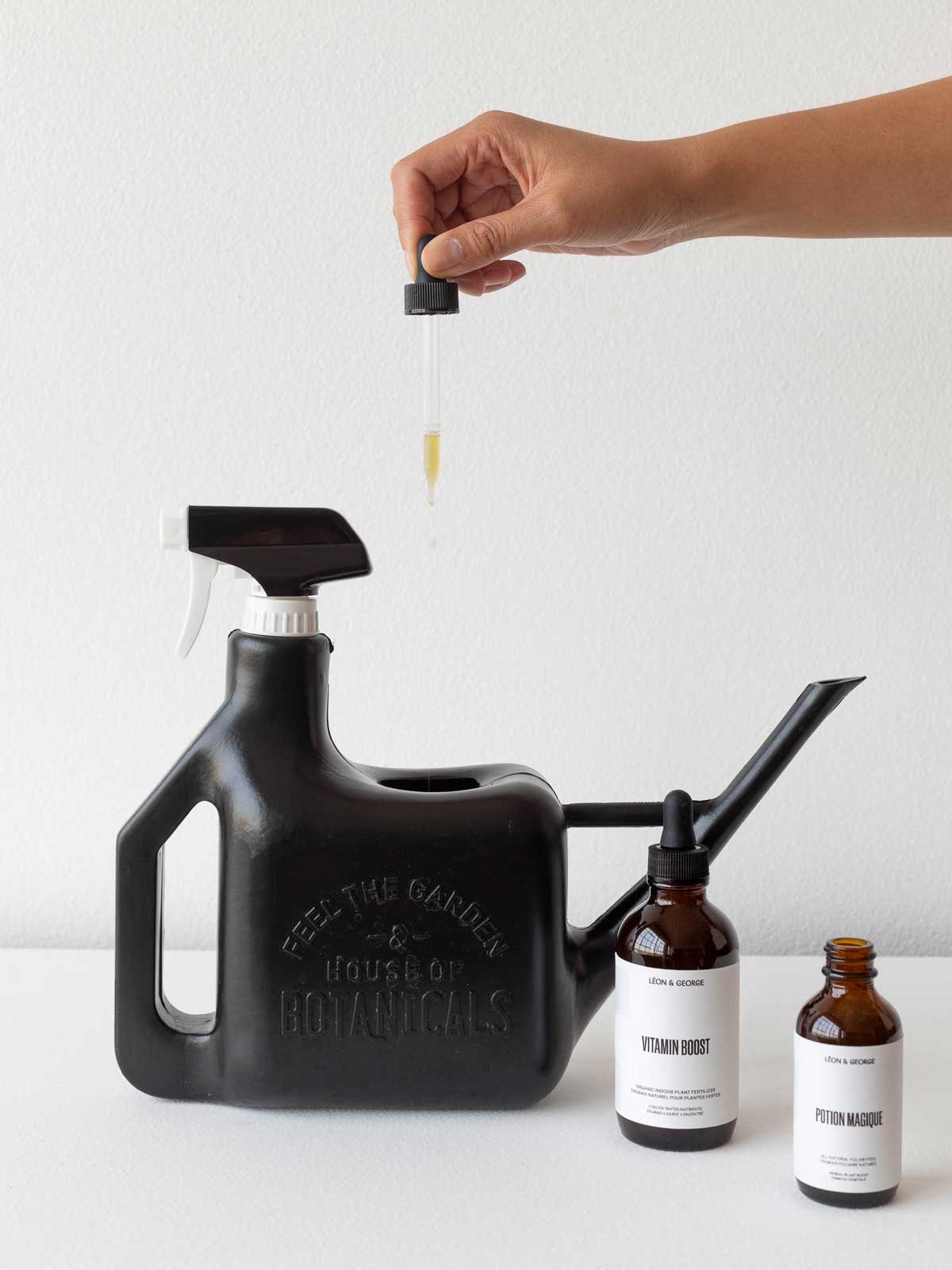When and how often should you fertilize indoor plants?
Plants need light, water, and nutrients. Most plants get their nutrients from the soil, but over time a soil’s nutrients can get depleted, especially with potted plants. This is when fertilizer comes in handy. But there are a few things you should know about fertilizer before feeding your plant.
When to fertilize indoor plants
The general guideline is to fertilize during the growing season, which is usually spring and summer. The extra warmth and light during these seasons stimulates plant growth that pauses during the cold and dark of winter. This is also why plants need less water during the winter. Adding nutrients at the right time helps spur that growth.
What type of fertilizer to use
Most commercial fertilizers include three main nutrients: nitrogen, phosphorus and potassium (NPK for short). These are often listed as numbers on a fertilizer’s packaging, in the form of 10-20-15 or 15-15-15. The numbers correspond to the percentages of N-P-K in the fertilizer. All purpose fertilizer usually has them in equal proportions, but the labeling should be clear. There are special fertilizers for plants like orchids or roses that have different proportions of NPK and other micronutrients the plants might need, and there are even fertilizers for stages of growth (ex: younger plants often need more phosphorous). A fertilizer’s label should tell you all you need to know about what it’s meant to be used for.
Liquid Fertilizer
A water soluble fertilizer that you add directly to your watering can every 2 weeks. Any brand will do, just follow label instructions closely for proper measurements. Overdoing it can scorch the plant’s leaves.
Benefits:
gives you more precise control over the amount of nutrients your plants are getting
allows you to see results faster, observe how your plants are reacting, and adjust future feedings (amount & length of time in between) accordingly
Slow Release
At the beginning of the growing season add slow release fertilizer directly to your plants’ soil. Any brand will do, but follow label instructions closely.
Benefits:
you'll only have to feed your plants once during this growth season as these fertilizers release a small amount of nutrients into the soil intermittently over 2-3 months
if vacationing is on your agenda, you can leave knowing your plants have the food they need to flourish in your absence
Recommended fertilizers for indoor plants
Any indoor plant food is suitable, but here are some recommended products worth checking out:
Boost Vitaminé Natural Plant Food
This natural plant food contains only four ingredients and is designed to be used with any indoor plant. We love it because unlike harsher, chemical-based fertilizers, it’s gentle enough to use sparingly even in the winter!
Potion Magique Foliar Feed
Ever tried foliar feeding? While it won’t be as effective in boosting new growth on your plant, it will increase nutrient intake through the plant’s leaves, and also works as a wonderful rescue remedy for sad or neglected plants. Try Potion Magique, a potent, all-natural foliar feed that you use in your misting routine (and also smells divine!).
How to fertilize indoor plants
Always follow the guidelines that come with the fertilizer you’ve purchased. Some fertilizer is liquid that you mix in when you water the plant, and some comes in solid form you stick in the soil or sprinkle above it. Generally speaking, fertilize your plants 1-2 times per month in the spring and summer, and reduce to one time per month or no fertilizing during the winter (depending on the strength of your plant food).
Something to note is that it’s very possible to give a plant too much fertilizer. It’s possible to “burn” a plant with too much fertilizer at once, and you’ll notice this if the tips of the leaves turn yellow/brown.
Also note that new commercial potting mix generally already has fertilizer in it, so you wouldn’t want to fertilize a freshly potted plant right away – wait about a month or so.
That’s about it. Now go forth and feed your hungry plants!
Indoor plants, potted & delivered
Premium plants paired with stylish ceramics, plus lifetime plant care support. Order online at leonandgeorge.com

